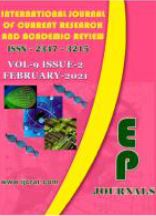Abstract Volume:9 Issue-2 Year-2021 Original Research Articles
 |
Online ISSN : 2347 - 3215 Issues : 12 per year Publisher : Excellent Publishers Email : editorijcret@gmail.com |
Lumpy skin disease (LSD) is an economically significant viral disease of cattle and caused by lumpy skin disease virus (LSDV). The virus is belonging to the genus Capripoxvirus (CaPV) of the family Poxviridae. Recently, the disease has been rapidly spreading to the Middle East, South east Europe and parts of Russian federation. The disease causes significant economic loss due to hide damage, loss of milk production, mastitis, infertility and death. Clinically, LSD is characterized by circumscribed skin nodules, fever, and abortions in females and sterility in males. LSD damages hides and causes death due to secondary bacterial infections. LSD is principally transmitted by blood-feeding arthropod vectors. However, transmission of the disease between animals is inefficient. Diagnosis is mainly based on observation of clinical signs and identification of the agent using conventional and real-time PCR methods, electron microscopy, and isolation of the virus in cell cultures, and using conventional serological tests. In endemic countries, vaccination is the only effective method to control the disease using live attenuated vaccines derived from Kenyan sheep and goat pox virus (KSGP) strains. However, there are reports of insufficient protection of the existing vaccines. Therefore; there is a need for more extensive data from the field and for larger-scale clinical trials to ensure the efficacy and safety of the current vaccines.
How to cite this article:
Girma Zewdie. 2021. A Review on: Lumpy Skin Disease: Current Updates on Epidemiological, Diagnosis, Prevention, and Control Measures in Ethiopia.Int.J.Curr.Res.Aca.Rev. 9(2): 49-63doi: https://doi.org/10.20546/ijcrar.2021.902.005



Quick Navigation
- Print Article
- Full Text PDF
- How to Cite this Article
- on Google
- on Google Scholor
- Citation Alert By Google Scholar
